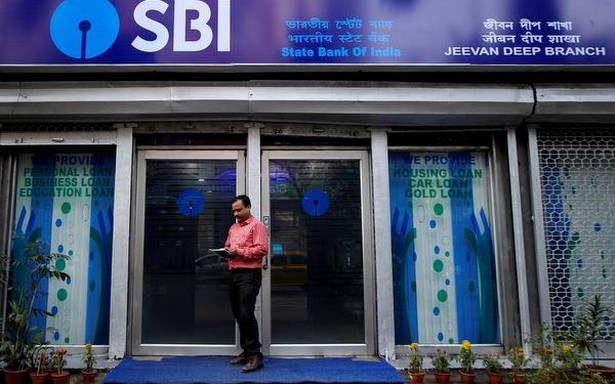“Corporates, in the listed space, reported better growth numbers across parameters in Q4FY21.”
State Bank of India has downgraded its growth projections for this year from 10.4% to 7.9%, and said the country’s economic recovery will now be ‘W-shaped’ instead of the ‘V-shaped recovery’ anticipated earlier.
While the bank said there could be an upward bias to its projections, linked to the ‘fervent hope of 1 crore vaccinations per day beginning mid-July as per Government projections’, it expects a ‘disproportionately larger impact’ on the economy from the second COVID-19 wave, especially since rural India is not as resilient as urban India.
“The pick up in pent-up demand is unlikely to make a large difference in FY22 GDP estimates, and hence it could only be a modest pick up,” the group’s chief economic advisor Soumya Kanti Ghosh said in a report.
“For the current financial year, GDP outlook will be impacted by the trajectory of international commodity prices which have risen sharply during the year. Further, the pass-through impact of higher commodity prices will be visible in domestic prices thus impacting consumption during the year,” the report noted, adding that overall consumption trends will depend on the revival of trade, hotels, transport, communication and broadcasting services that support roughly 25 crore households.
“Corporates, in the listed space, reported better growth numbers across parameters in Q4FY21, but this trend may soon reverse… Notably, the rural economy has been affected during the second wave. Diesel consumption, Two-wheeler and tractor sales, fertiliser sales, MGNERGA employment generated all declined in April 2021,” Mr Ghosh pointed out.
Warning that the intensity of the third wave could be as severe as the second wave, going by international experience, the SBI report said vaccination should be the key priority for India, especially for children in the 12-18 years age bracket.
“With around 15-17 crore children in the 12-18 age bracket, India should go for an advanced procurement strategy like that adopted by developed nations to inoculate this age-group,” it suggested.
More deaths in Rural, Semi-rural areas
Comparing the reported COVID-19 deaths in the second wave with the first, SBI found that rural and semi-rural areas have been affected more this time.
More rural districts have a cumulative fatality rate higher than the country’s overall fatality rate during the current wave, Mr Ghosh said, with Arunachal Pradesh, Jharkhand, Meghalaya, Mizoram & Uttarakhand clocking the maximum increase in fatality rate in rural areas during the second wave. States like Maharashtra, Tamil Nadu, Karnataka and Punjab have witnessed a lower fatality rate in rural parts.
“These account for lower amount of overall economic activity, thus the GDP loss due to the current wave is lower than that in the first wave where urban and semi-urban centres were affected more,” it said.
However, the States where tier-2 centres (districts with urban population of between 51%-75%) are affected more, including Gujarat, Haryana, Jharkhand, Kerala, Rajasthan and Uttarakhand) these are likely to contribute more to the GDP loss this year.
“Amongst the urban districts, Tamil Nadu, Punjab, Gujarat have maximum districts whose fatality rate is higher than the national average. Moreover, urban areas of Jharkhand, Nagaland, Mizoram, Uttarakhand and Haryana have registered increase in fatality rate in second wave,” the report inferred.
Source: Read Full Article
